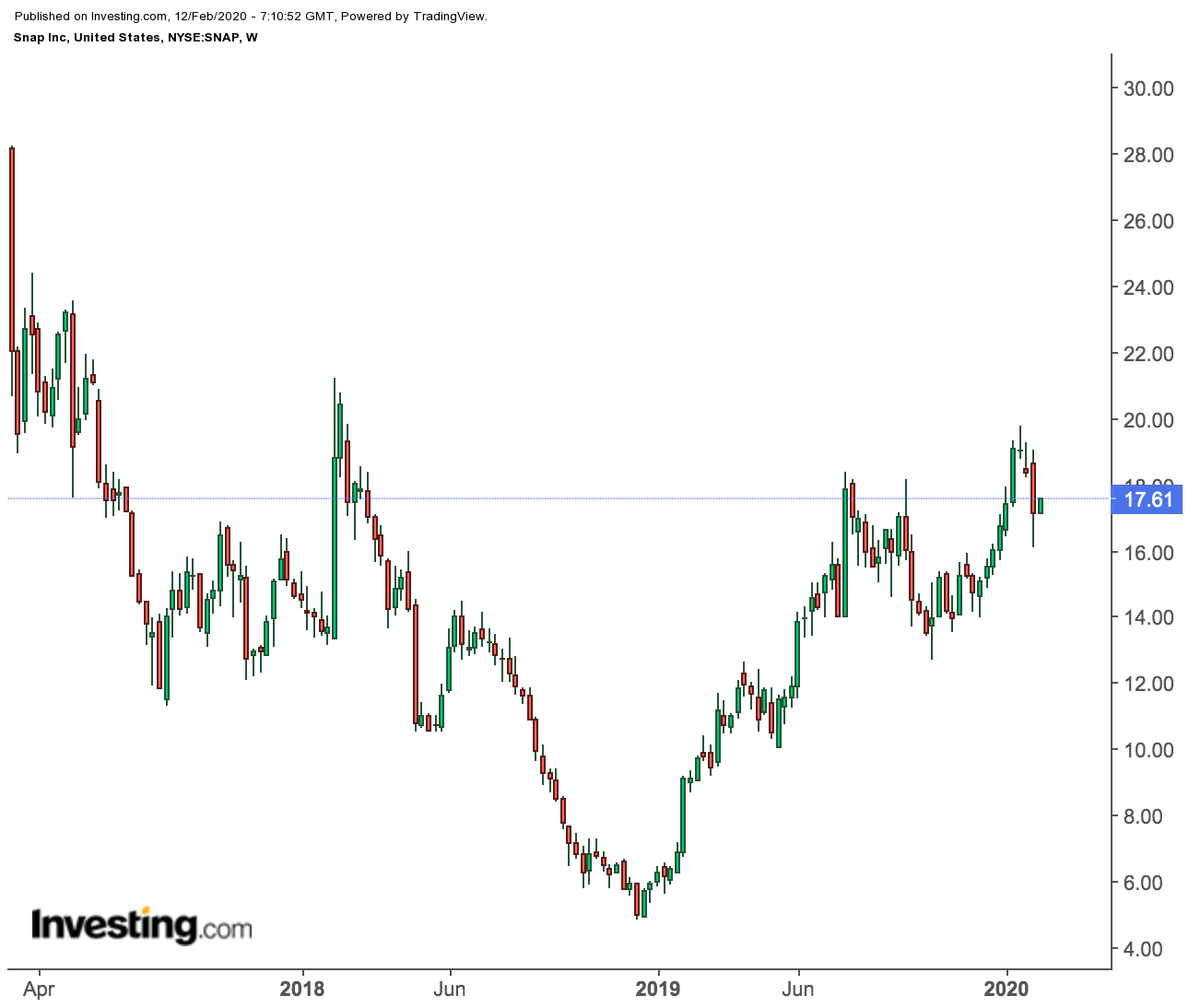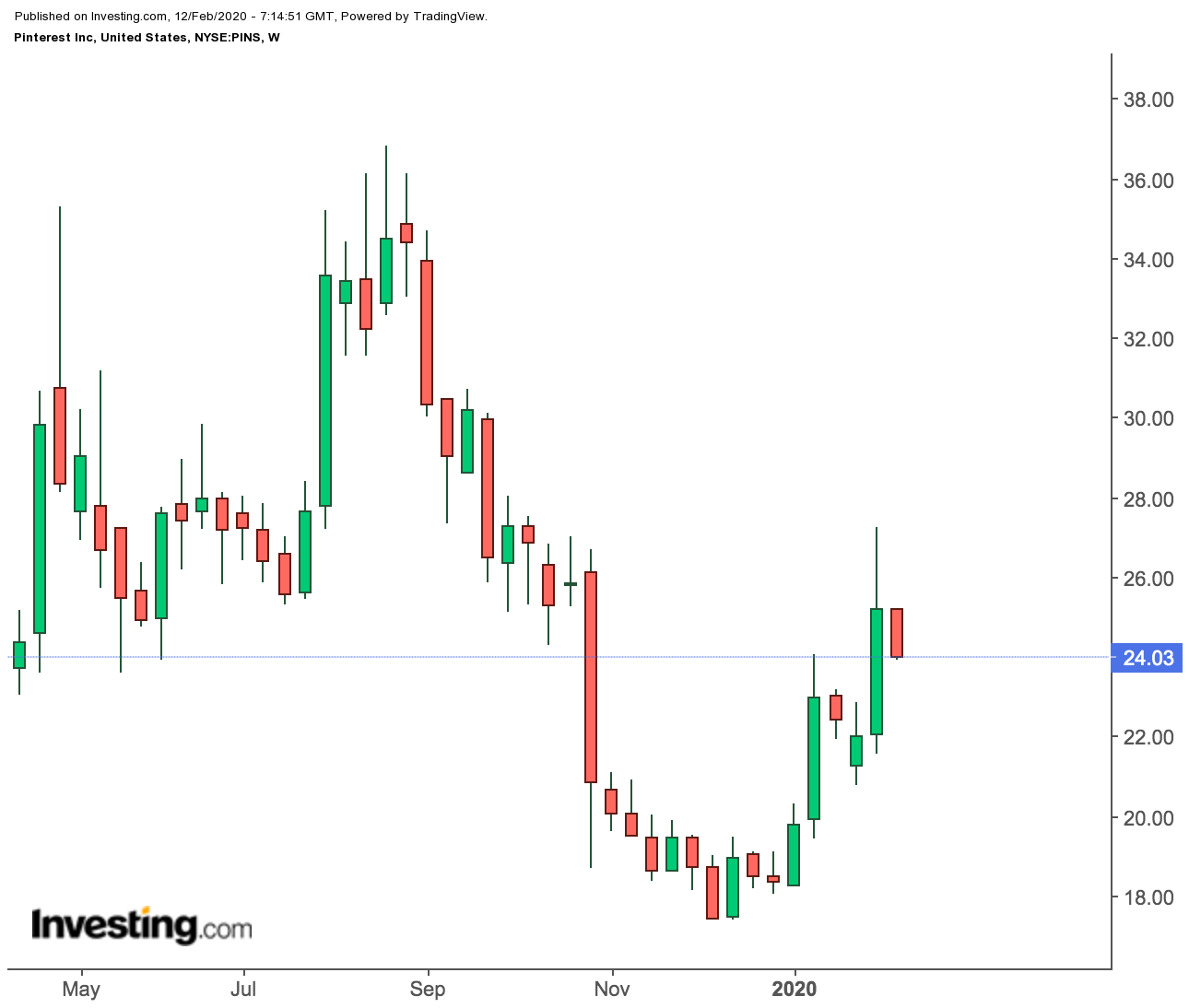With the largest U.S. social media companies coming under more intense regulatory scrutiny, investors in the digital space are looking to diversify their investments and take some exposure to small stocks which don’t carry antitrust risk.
In this group, we have short-listed Snap (NYSE:SNAP) and Pinterest (NYSE:PINS) to analyse their current earning momentum and the possible risks that come with their small size. Let’s take a deeper look:
Snap Turnaround Shaky
The operator of photo-sharing app Snapchat was one of the most successful turnaround stories of 2019, after it started beating estimates in recent quarters. But that string of wins ended last week when the company reported sales for the fourth-quarter that missed analysts’ expectations.
The Santa Monica, Calif.-based social-media company reported a 44% jump in sales from a year earlier to $561 million, but it failed to cut its losses, which widened to $0.17 a share against analysts’ estimate of $0.12 a share.
Despite some disappointment on the top-line numbers, Snap continued to add daily users to its app, which went through a major redesign last year. Its daily user base hit 218 million in Q4, up 8 million, or 3.8%, from the previous quarter. The figures marked the fourth straight quarter of growth in the metric.
This mixed earnings report, however, attracted selling pressure that brought an abrupt halt to Snap’s past year rally that had sent its stock soaring more than 100%. At the close of yesterday's session, Snap shares trading at $17.61, down from its $19.03 pre-earnings level.
The company’s improving financial and user metrics played a big role in the shares' outperformance last year, but the regulatory oversight that the large social media companies are facing is another big positive for Snap.
An app with a clear and defined audience and with little room for misuse is in a much better position to withstand potential regulatory changes globally than behemoths like Facebook (NASDAQ:FB) and Alphabet's Google (NASDAQ:GOOGL) — the social media heavyweights that some politicians are seeking to break up.
Pinterest Showing Strength
San Francisco-based Pinterest operates a site with more than 320 million monthly active users globally.
It serves as a digital bulletin board for pictures and ideas for furniture, fashion, weddings, recipes and more, allowing users to scroll through a feed of “pins” that contain images or videos. Users can then save the pins to customizable boards to curate ideas for anything from vacation plans to dinner recipes or holiday shopping lists.
Pinterest management believes their appeal to advertisers is very different from that of other social media companies as users come to the site with an intent to make a purchase. That makes advertisements an inherent part of the Pinterest user’s experience, rather than something negative.
After the initial public offering in April last year which raised $1.4 billion, Pinterest stock is showing some signs of strength. In 2019, the company's revenue crossed the $1 billion mark. It now expects revenue to hit $1.52 billion in 2020, helped by new investments that include a verified-merchants program that would initially focus on fashion and home decor.
Recent investments, from boosting the speed of uploads to adding videos with makeup tutorials or cooking directions, have fueled the company’s growth—both in terms of revenue and users. Investors have liked Pinterest’s recent direction, sending its stock up 30% this year. The shares closed yesterday at $24.03. But its value is still 34% lower than the 52-week high of $36.83.
One big risk that’s keeping some investors on the sidelines is that the company is running large losses and it might be a long journey before the company is able to show sustained profitability. Pinterest ended 2019 with a loss of $1.36 billion, or $3.24 a share, for the year, compared with a loss of $63 million, or $0.50 a share, a year earlier. Revenue rose 51% to $1.14 billion, but expenses more than tripled to $2.53 billion.
Bottom Line
Both Snap and Pinterest offer a different risk-reward equation for investors. While Snapchat has a growing young audience, Pinterest has a wider appeal to all age groups with its unique platform that helps people find shopping ideas and inspiration.
Snap, in our view, is riskier than Pinterest despite some signs of stability in its earnings and user engagement metrics. Instagram, owned by much bigger rival Facebook, continues to pose an existential threat to Snap that's unlikely to go away.
